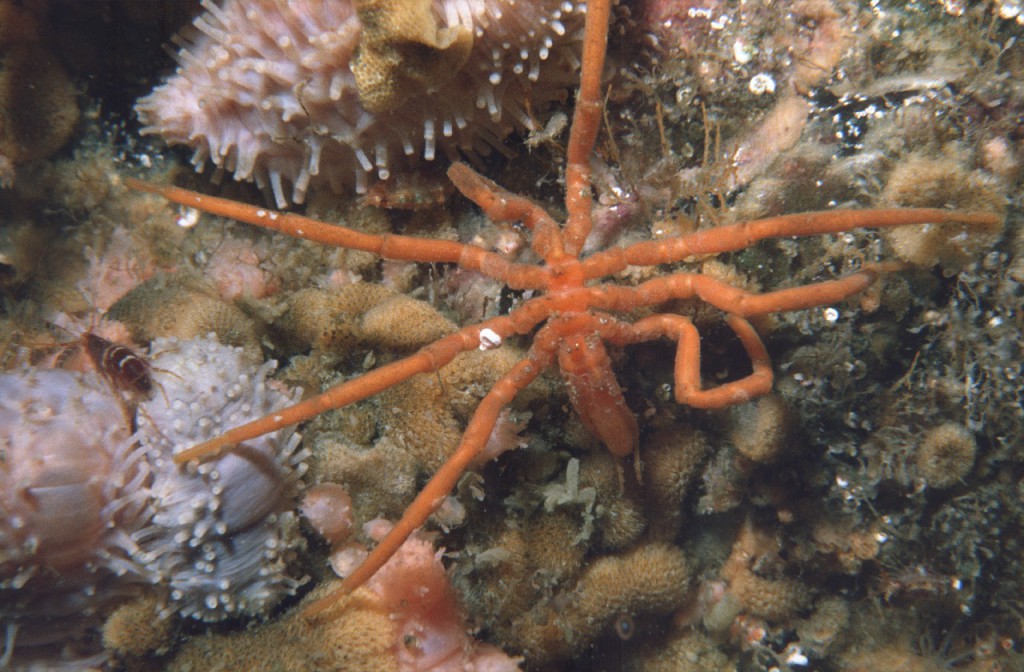New Atlas of Southern Ocean marine life
A new atlas, providing the most thorough audit of marine life in the Southern Ocean, is published this week by the Scientific Committee on Antarctic Research (SCAR). Leading marine biologists and oceanographers from all over the world spent the last four years compiling everything they know about ocean species from microbes to whales.
It’s the first time that such an effort has been undertaken since 1969 when the American Society of Geography published its Antarctic Map Folio Series.
In an unprecedented international collaboration 147 scientists from 91 institutions across 22 countries (Australia, Belgium, Brazil, Canada, Chile, Denmark, France, Germany, Ireland, Italy, Japan, the Netherlands, New Zealand, Norway, Poland, Portugal, Russia, South Africa, Spain, Switzerland, the UK and the USA) combined their expertise and knowledge to produce the new Biogeographic Atlas of the Southern Ocean.
More than 9000 species are recorded, ranging from microbes to whales. Hundreds of thousands of records show the extent of scientific knowledge on the distribution of life in the Southern Ocean. In 66 chapters, the scientists examine the evolution, physical environment, genetics and possible impact of climate change on marine organisms in the region.
Chief editor, Claude De Broyer, of the Royal Belgian Institute of Natural Sciences, said:
“This is the first time that all the records of the unique Antarctic marine biodiversity, from the very beginnings of Antarctic exploration in the days of Captain Cook, have been compiled, analysed and mapped by the scientific community. It has resulted in a comprehensive atlas and an accessible database of useful information on the conservation of Antarctic marine life.”

The data, and expert opinions, in the Atlas will help inform conservation policy, including the debate over whether or not to establish marine protected areas in the open ocean. Sophisticated environmental models coupled with existing species distribution data provide a valuable outlook on the possible future distribution of key species as they adapt to climate change.
New advances in genetics have shed light on some of the best known species from the Antarctic sea floor. The giant isopod crustacean Glyptonotus antarcticus is one of those. The animal lives on the edge of the continent at depths of up to 600 metres. Previously considered to be a single species with a circumpolar distribution, molecular barcoding suggests it may, in reality, be a group with up to eleven species inhabiting much smaller geographic regions.
Author, and editor, Huw Griffiths, of the British Antarctic Survey, said:
“The book is unique and contains an amazing collection of information and photos. It’s been an enormous international effort and will serve as a legacy to the dedicated team of scientists who have contributed to it. The Atlas is a must-read for anyone interested in the animals living at the end of the Earth.”
The Atlas contains around 100 colour photos and 800 maps. It will be launched at the SCAR 2014 Open Science Conference in Auckland, New Zealand on Monday 25th August.
ENDS
Issued by the British Antarctic Survey Press Office.
Contacts:
Paul Seagrove, Tel: +44 (0)1223 221414; +44 (0)7736 921693 email: psea@bas.ac.uk
Rachel Law, tel: +44 (0)1223 221437; mobile: +44 (0)7740 822 229; email: raclaw@bas.ac.uk
Notes for editors
The Biogeographic Atlas of the Southern Ocean is published by the Scientific Committee on Antarctic Research, Scott Polar Research Institute, Lensfield Road, Cambridge, CB2 1ER, United Kingdom.
Photos, videos and maps are available from the British Antarctic Survey Press Office.
The publication is funded by the Census of Antarctic Marine Life (Albert P. Sloan Foundation, New York) and the TOTAL Foundation, Paris, and shared the Cosmos Prize awarded to the Census of Marine Life by the International Osaka Expo’90 Commemorative Foundation, Tokyo, Japan.
It is supported by:
- The Belgian Science Policy (Belspo), through the Belgian Scientific Research Programme on the Antarctic and the “biodiversity.aq” network (SCAR-MarBIN/ANTABIF)
- The Royal Belgian Institute of Natural Sciences (RBINS), Brussels, Belgium
- The British Antarctic Survey (BAS), Cambridge, United Kingdom
- The Natural Environment Research Council (NERC), Swindon, United Kingdom
- The Université Pierre et Marie Curie (UPMC), Paris, France
- The Australian Antarctic Division, Hobart, Australia
- The Scientific Steering Committee of CAML, Michael Stoddart (CAML Administrator) and Victoria Wadley (CAML Project Manager)
British Antarctic Survey (BAS), an institute of the Natural Environment Research Council (NERC), delivers and enables world-leading interdisciplinary research in the Polar Regions. Its skilled science and support staff based in Cambridge, Antarctica and the Arctic, work together to deliver research that uses the Polar Regions to advance our understanding of Earth as a sustainable planet. Through its extensive logistic capability and know-how BAS facilitates access for the British and international science community to the UK polar research operation. Numerous national and international collaborations, combined with an excellent infrastructure help sustain a world leading position for the UK in Antarctic affairs.
